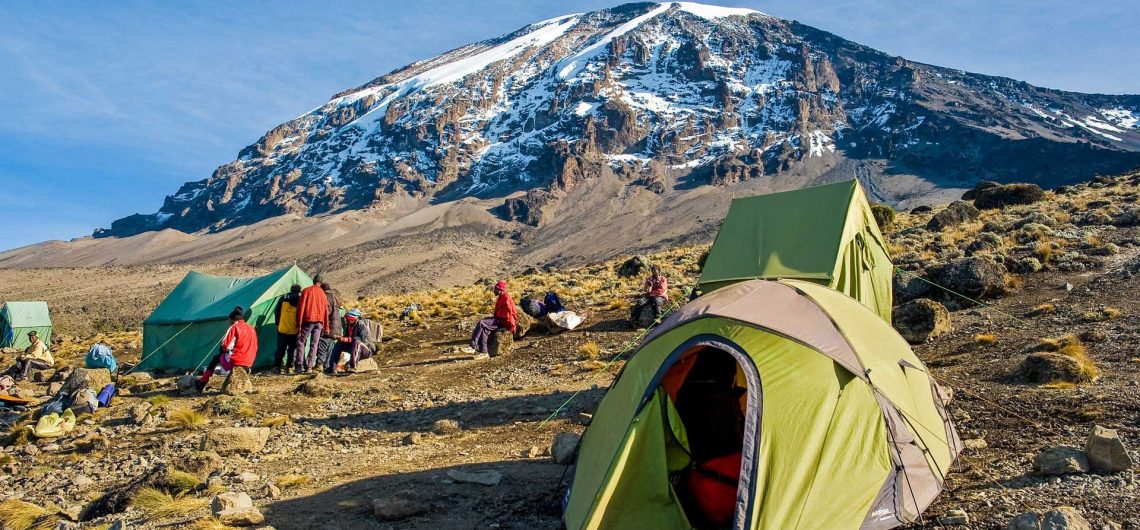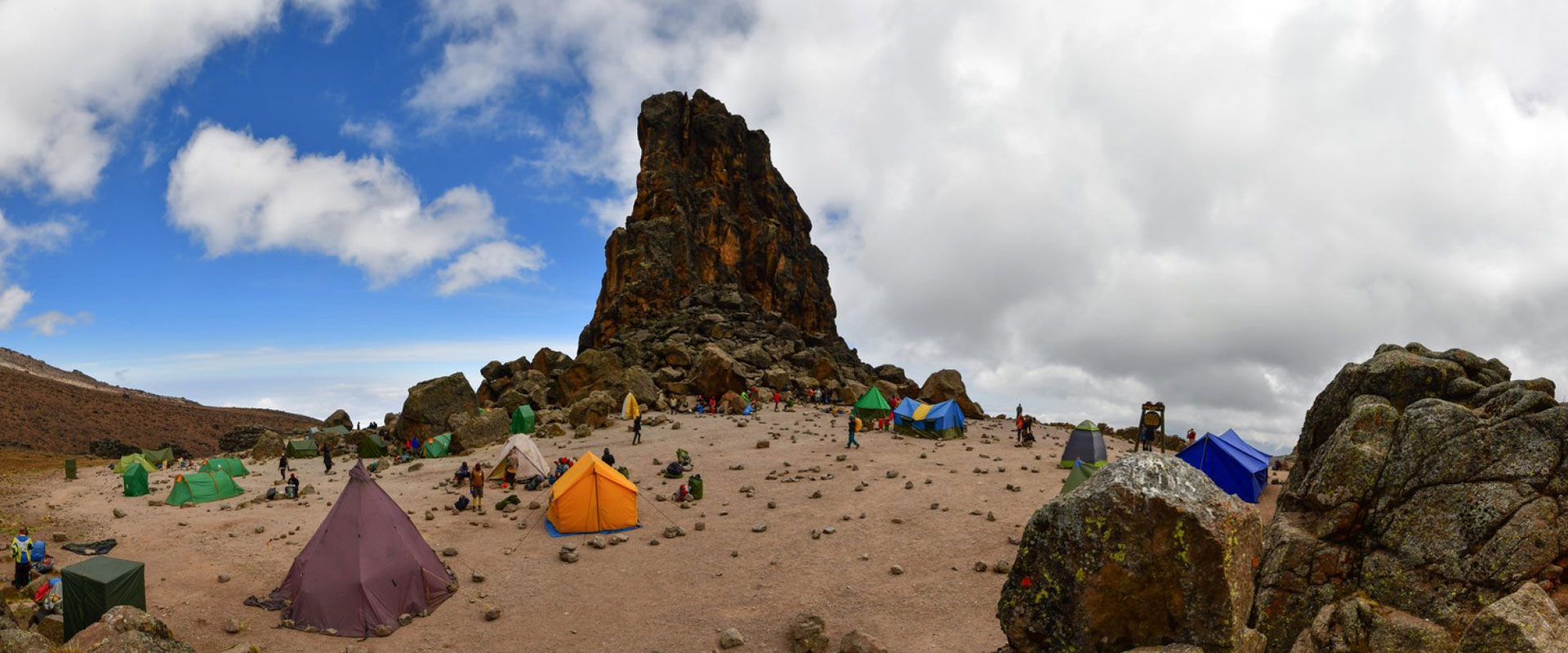Lemosho vs Machame is the Messi vs Ronaldo or Kobe vs Lebron debate equivalent for Mount Kilimanjaro. Just like us, every climber has their own reason for choosing his or her personal favourite. As one of the world’s Seven Summits, Kilimanjaro is at the top of every enthusiastic trekker’s wish list. Every year, thousands of people travel to Tanzania with the hopes of conquering Kilimanjaro’s distinctive peak and reaching the summit at 5,985 meters (19,635 feet). Extreme treks like this one come with a number of hurdles, which means that success is not always guaranteed, with some climbers having to turn back owing to altitude sickness or an inability to keep up with the arduous nature of the journey.
There are two Kilimanjaro routes, however, that make things a lot simpler for hikers, especially when paired with adequate training and physical preparation.
Lemosho vs Machame Route
Below is the difference at a glance between the Lemosho and Machame Routes, two popular routes on Mount Kilimanjaro set apart by a few differences here and there like the number of days you would spend on the mountain using these individual routes. Lemosho Route takes longer, between 7 and 8 days while Machame takes a shorter duration of 6-7 days. Also since Machame Route is more popular, it is more crowded than the much calmer Lemosho Route. Lemosho is also more scenic than the Machame Route and it has a higher summit success rate than the Machame Route because it gives climbers more time to acclimatize.
Lemosho | Machame | |
| Distance | 70 kilometers (43.5 miles) | 62 kilometers (38.5 miles) |
| Average Duration | 6-8 days | 6-7 days |
| Average Difficulty | Moderate difficulty | Moderate difficulty |
| Highest Point | Uhuru Peak: 5,895 meters (19,635 feet) | Uhuru Peak: 5,895 meters (19,635 feet) |
These routes are known as Lemosho and Machame, and they both take you on a journey through snow-capped mountain scenery, rugged volcanic terrain, and a euphoric experience like no other – not to mention that they both have a high success rate thanks to their longer length and consideration for altitude acclimatization.
Related: Machame vs Marangu Route comparing the most popular routes on Kilimanjaro
What are the similarities between Machame and Lemosho Routes?
Despite the obvious differences between these two routes they share a number of things. These two routes are similar in that they both offer camping accommodation. To sleep on the mountain using both the Machame and Lemosho Routes, you will have to pitch camp and erect tents that you will use to sleep in. Click here to see the campsites on Mount Kilimanjaro.
Another similarity that these routes share is that even though they approach the summit of Kilimanjaro from different directions, they use the same route to descend the mountain. This route is known as the Mweka Route which is a descent-only route that exits the mountain through the Mweka gate.
Advantages and disadvantages of the Machame – Lemosho Routes
Both routes offer advantages and disadvantages, so it’s worth balancing them to select the ideal hike for you, ensuring your experience is as memorable as Kilimanjaro’s natural splendour.
To get. a clear picture and decide which route is better than the other when it comes to climbing Mount Kilimanjaro, let us compare the pros and the cons of these two superb routes.
Read also about: Lemosho vs Marangu Route
Lemosho Route
Pros
Remote experience: Because so many people try the amazing marvels of a Kilimanjaro climb each year, the pathways may get very crowded. The Lemosho route is a more quiet option for those who want to get off the usual path and enjoy a calm hike.
Wildlife Sightings: Add an unspoiled element to your Kilimanjaro journey by meeting Africa’s stunning wildlife up and personal. Because there are fewer people on this path, the chances of seeing wild antelope, buffalo, and possibly elephants are substantially higher, creating a magnificent encounter unlike any other in Kilimanjaro’s jungles.
Scenic: There are several deep canyons (barrancos) carved into Kilimanjaro’s soft rocks and ashes, the most remarkable of which is the Great Barranco Wall, which stands at 4,602 meters (15,100 feet) above sea level. The natural treasures on this walk are extremely spectacular, especially after passing by the massive Lava Tower, a freestanding rock structure with a vertical height of 99 meters (325 feet).
Cons
Expensive: Lemosho is the most expensive of all the Kilimanjaro trekking paths. Budget tour companies have less competition, and transportation costs are higher, but if you prefer a more distant and quieter route, the extra money is worth it (literally). Read here why Mount Kilimanjaro is expensive
Longer: For Lemosho, an eight-day hike is advised. Some may put this in the ‘cons’ area because they want to finish the trek as quickly as possible, however, it is actually a pro. Because of the extended time, your body is able to acclimate to the altitude and avoids any severe illness, boosting your chances of reaching the summit.
Machame Route
Pros:
Shorter: The Machame route is one day shorter than the Lemosho trek and yet has a good success rate. The seven-day option (which may be completed in six days by more experienced altitude trekkers) involves a day of high-altitude ascending and low-altitude sleeping, which aids in acclimatization and boosts the odds of reaching the summit.
Cheaper: Because Machame is a more popular choice, the Machame route has a lot of competition among tour providers, resulting in significantly reduced costs. So, if you want to save money while on the mountain, this could be the way to go. Learn how much it costs to climb Kilimanjaro.
Cons
Traffic: Due to the route’s popularity in recent years, the track has grown rather congested. However, if you find comfort in having a large group of people about you, especially if something goes wrong, this might be a plus.
Less wildlife: As traffic increases, so does fauna, and the chances of seeing mountainous critters drop substantially. The beauty of Kilimanjaro, however, still flows through this path, so seeing animals is just a bonus.
So which one is the better route?
Lemosho is our personal favourite as most climbers that use this route, give positive feedback after climbing Kilimanjaro using the Lemosho Route compared to the Machame Route. Overall, both of these routes provide breathtaking scenery while passing through four distinct climatic zones and taking into account altitude acclimatization to increase success rates. It’s only a matter of deciding which route is best for you and whether money, distance, or traffic are factors, you now know which to choose! Or click here to know how to choose the best route for your Kilimanjaro trek.
What is the main difference between the Machame and Lemosho Routes?
The length of the Machame and Lemosho Routes is the clearest disparity between them: Lemosho is slightly longer at 8 kilometers (5 miles). As a result, it takes an extra day to finish the Lemosho Route: Lemosho takes 7 or 8 days to finish, but Machame may be done in 6 or 7 days.
Another distinction is the beginning point: Machame begins at Moshi in the south, whilst Lemosho begins in the west. As a result, if you arrive via Moshi, the Lemosho Route is a lengthier and slightly more expensive trip on your first day.
Both routes are basically similar and offer the same panoramic features farther up the mountain due to the fact that they meet in the middle.
Should I take the Machame or Lemosho Route?
The Machame or Lemosho Route should be chosen based on the length and duration of the climb. The Machame Route takes 6 to 7 days to complete, whereas the Lemosho Route takes 7 to 8 days.
Choose the Machame Route if you desire a 6-day climb. However, we urge that you climb for at least 7 days to better acclimate to the high altitude and therefore maximize your chances of reaching the summit.
If you have seven days to climb, choose the Machame Route if you want shorter walking days and the Lemosho Route if you want to do a lot of walking.
If you have the time, do the 8-day Lemosho Route to strengthen your acclimatization to high altitudes.
If your budget allows it and you’re searching for the simplest hiking path with the least amount of walking per day and the best likelihood of summit success, we offer a custom-designed 7-day Machame Route climb.
![]()



Comments